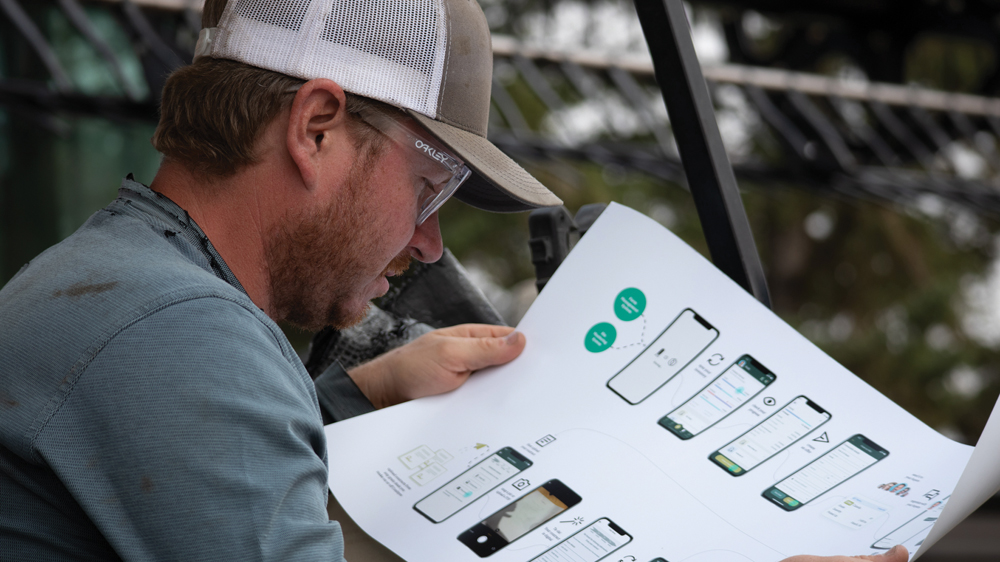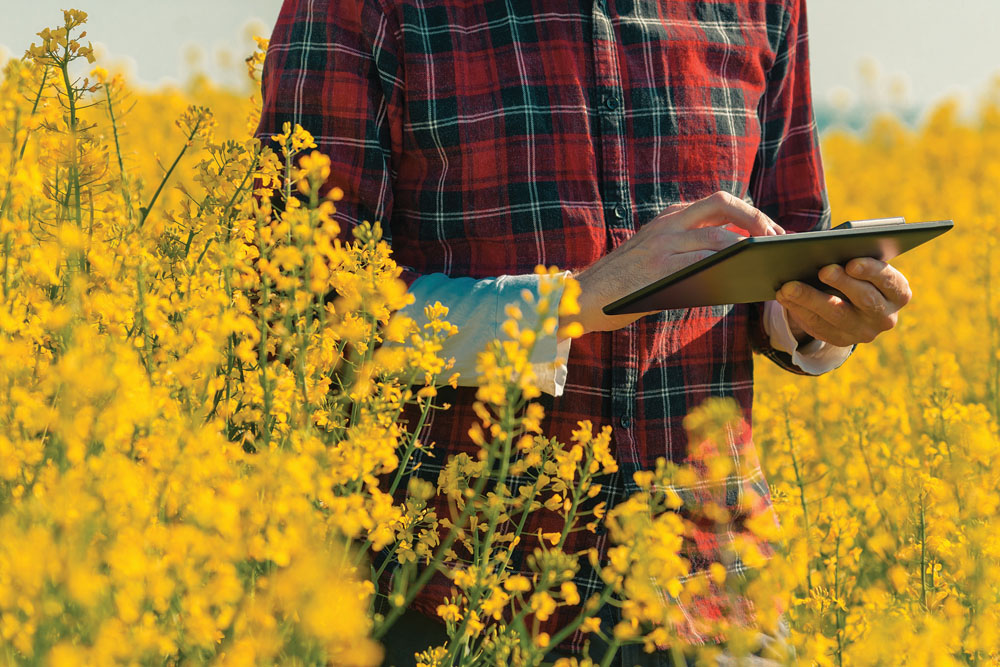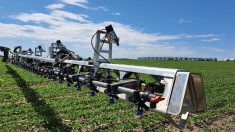A new software system developed by a Canadian tech firm promises to make grain marketing easier and more efficient for farmers across the country.
Combyne was developed by Alain Goubau and his Ontario-based company, Combyne Ag. It was released to the public in November 2021 and is available for mobile devices and computer desktop use.
The basic premise of the system is simple. Combyne is a crop marketing hub that allows farmers to input their crop inventory, enter data from any contracts they’ve signed, calculate their average weighted price and monitor how much inventory they have in storage.
Read Also

Cancer agency reclassifies another herbicide ‘probably carcinogenic’
The WHO’s cancer research agency has now put atrazine, a herbicide well known to corn growers, in the same potential-hazard category where the agency put glyphosate.
Goubau, who is CEO of Combyne Ag, says there are similar crop marketing ag tools available, but Combyne is unique because it allows farmers to bring grain marketing information from multiple platforms into one app. Another important distinction is Combyne was designed to meet the needs of farmers rather than grain buyers.
“We’ve been watching the buildup of some pretty good software stacks for grain merchandisers and grain originators,” says Goubau. “They’re nice apps … but they’re never optimized around the farmer. It’s always around the grain buyer or originator.
“Our view was, what’s the equivalent for farmers? What are the unified marketing tools that speak of the farmer’s workflow that needs to be unified? That’s Combyne. It’s a crop marketing tool purposely built for farmers.”
Combyne is relatively easy to use. The first step for users is to input their inventory for a given crop year, including how much they have in storage. Then they enter the contracts they have already signed for that crop.
The app calculates how much of that crop has been sold, the average price and how much grain remains to be sold. Those totals are automatically updated as new contracts are uploaded. The app also provides a view of when payments will be made as those contracts are uploaded.
Goubau says the app was designed to make it quick and easy for users to upload their data.
Rather than manually typing in a bunch of numbers from a contract, a user can take a photo of the document or upload a PDF file and Combyne’s optical character recognition technology will analyze and digitize that information including bushel quantity, price, grade and delivery window.
“We basically replace typing all of that stuff into an Excel spreadsheet,” Goubau says, adding his company is also negotiating with several other software firms to tie into their digital marketing systems.

Lesson in listening
Goubau studied chemical engineering and law in university and was inspired to create Combyne in part by his experiences on his family’s mixed-use farm in the Ottawa Valley region. While his family did a good job of marketing the cash crop side of their operation, it was often difficult to find the information they needed to make informed decisions because it was siloed in multiple locations that weren’t linked, he says.
“You start realizing it’s all the same information and it’s all sitting in different people’s heads or in different software or in an email or paper. I thought, how do you unify that,” Goubau recalls.
One of the company’s priorities during development of Combyne was to consult with farmers in different regions of the country, including Western Canada. Goubau jokes that “big ears, small mouth” is his company’s unofficial motto.
“We’ve sort of had this approach in previous ag tech software companies of ‘hey, we’ll think up something, we’ll build it and people will like it.’ But we realized you end up building something that people don’t need or isn’t well built,” he explains, adding his company visited numerous farmers in person to answer questions and troubleshoot issues with the app.
“The second reason is I’m one of the farmers on our team. But the farm I live on in Ontario is quite different than a lot of farms in Western Canada. There’s a lot of similarities, but they’re still quite different,” says Goubau.
“The other thing is people are more likely to trust the product if we show up. People now get into the app, and they get it. That’s because we put in the effort to do that design and research with them.”
Easy access
Feedback Goubau and his team have received on Combyne from farm users has been mostly positive, he says.
One of those users is Ryan Griffin, who operates a grain farm near Oxbow, Sask., with his father-in-law. Griffin has been using Combyne for about a year and says he can quickly access the data needed when making important marketing decisions.
“What I like about it is mainly at a glance, no matter where I am, I know what I have for outstanding contracts and I know how much grain I’ve sold,” says Griffin.
“I can see my average price to date and what contracts I have so then I can make marketing decisions with knowledge about where I am exactly in my yearly plan and what I’ve sold. It’s all there very quickly and is visible to me. It helps you to be confident with your decisions and know this is how much grain I have, and this is how much I’ve sold.”

Sean Edwards, who helps operate his family’s grain farm near Nokomis, Sask., began using the app just over a year ago and says it has helped make his work life easier.
“For us, it has been really good. It just makes tracking your inventory and your contracts a lot easier. Everything’s at your fingertips on your phone now,” says Edwards.
“If an opportunity comes up, within a minute you can look and … know exactly how much inventory you have left, and you can make a decision on how much you want to sell and you don’t have to guess how much you might have left.
“In the past, I would have had to check a bunch of spreadsheets. It’s a lot quicker and better to make decisions now. I don’t have to spend days on the computer entering contracts and doing spreadsheets.”
That’s music to Goubau’s ears.
“Our big belief is you’re going to be able to optimize your decisions if those decisions are informed,” he says. “If you can bring all of that information into one single hub, you start to make more informed decisions, and as you make more informed decisions you start to make more optimized decisions. Informing that kind of decision-making is where we want to go.”
However, Combyne is not meant to serve as a marketing advisor.
“We take the view that we build software tools that support decision-making, but we don’t provide advice per se,” says Goubau.
“We think that crop marketing advisors have a really big role to play. We really want to find ways to work with them and other farmer-centric service providers. We’re not here to displace any advisory systems. We’re here to complement them through what we do, which is software.”
Subscription fee
The Combyne app can be downloaded for Android and Apple devices. It was free to use at first but as of February, the company plans to charge an annual subscription fee of $150 for its basic service. Goubau says most users don’t have a problem with the fee and he hopes it indicates to them that the company is going to be around for the long haul.
He estimates several thousand farmers used Combyne during the app’s trial period. That included about 300 farmers who are now active users, a number Goubau says is growing by about 15 to 20 users each month despite almost no marketing push.
About 12 million bushels are tracked on the platform now. Goubau expects those numbers to increase quickly as more people learn what the program can do.
“I think we’ve got momentum. The key thing is we want to manage expectations. We’re trying to under-promise and over-deliver,” he says.
Combyne Ag was recently acquired by Bayer CropScience and its digital farming systems division. Goubau says Combyne will operate at arm’s length from the broader Bayer organization, adding the acquisition will provide the company with more resources and allow the platform to selectively integrate with other digital platforms owned by Bayer.
















